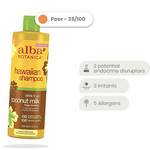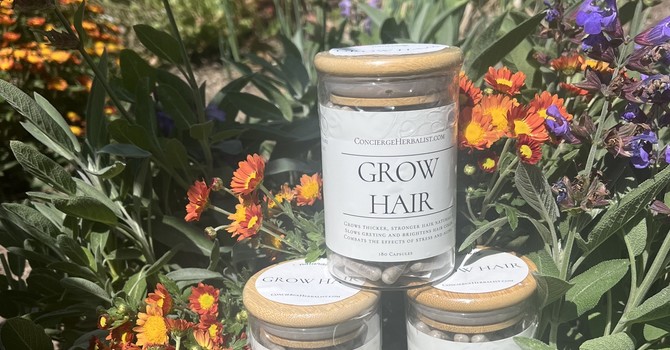A recent study highlights a significant issue: the use of personal care products such as lotions, ointments, and hair conditioners is associated with higher levels of hormone disrupting chemicals called phthalates in young children. This research also reveals that different racial and ethnic groups experience varying levels of exposure to these chemicals. A little knowledge and ingredient checking can help you avoid these chemicals. Let's delve deeper into the research, understand why hormone disruptors are problematic, and explore practical measures to safeguard your health and that of your family.
What Are Hormone Disruptors?
Hormone disruptors, specifically a class of chemicals known as phthalates, can mimic, block, or interfere with the body's hormone (endocrine) system, which regulates everything from growth to reproduction. Phthalates are added to plastics to increase flexibility and durability, and are also found in many personal care products. These chemicals can affect the normal functioning of hormones by either mimicking natural hormones like estrogen and testosterone or by blocking the hormones’ receptors, disrupting natural hormonal activity. These chemicals are found in many of the common products you might be using on a daily basis (like lotions, shampoos, makeup, and cosmetics). Phthalates absorb through the skin into your blood system and from there, can interfere with our body's hormone systems, leading to a variety of health issues. While their effects are particularly concerning for children due to their critical stages of development, research shows exposure to hormone disrupting chemicals like phthalates pose significant risks for people of all ages.
The Latest Research on Children
A recent study published found a link between the use of personal care products and elevated levels of phthalates in young children, especially those aged 4 to 8. Researchers found that products like hair oils, body lotions, and other skincare items were associated with higher urinary concentrations of various phthalates. Phthalates are particularly harmful to children because they can interfere with key developmental stages, leading to impaired brain development, behavioral issues, and even early onset puberty.
Phthalates and Racial Disparities
The recent study also found racial disparities in phthalate exposure. Children from different racial and ethnic groups exhibited varying levels of phthalates, likely due to differences in the types of products marketed and used in these communities. For example, Hispanic, Asian, and Pacific Islander children had higher phthalate levels from hair oils, while white children showed elevated levels from body lotion. Black children, however, had the highest overall concentrations of phthalates, with studies suggesting that many beauty products marketed to communities of color have high levels of these chemicals.
Phthalates and Adults: Long-Term Impact
Adults also face significant risks from long-term exposure to hormone disrupting chemicals like phthalate. Phthalates are in many daily-use products like lotions, oils, hair products, cosmetics, and makeup in general. Chronic exposure to phthalates has been linked to reproductive health issues, such as reduced fertility, lower sperm counts in men, and menstrual irregularities in women. In fact, a 2022 study reported a staggering 51.6% decline in global sperm counts between 1973 and 2018, suggesting that environmental factors, including phthalates, are contributing to this troubling trend.
Five Key Concerns About Hormone Disruptors
- Impaired Brain Development in Children: Hormone disrupting chemicals like phthalates are linked to developmental delays, including impaired cognitive function and behavioral issues.
- Early Puberty: There is growing evidence that early exposure to phthalates contributes to girls entering puberty at a younger age. This is often linked to other stressors such as obesity and environmental factors.
- Reproductive Health: In men, chronic exposure to hormone disruptors is correlated with declining sperm counts and overall fertility issues. Women may experience menstrual irregularities and reduced fertility.
- Cancer Risk: Long-term exposure to these chemicals has been linked to an increased risk of certain cancers, including breast and testicular cancer, as hormone disruptors can interfere with cell growth and replication.
- Hormonal Imbalance: Phthalates and other hormone disruptors can cause systemic disruptions, contributing to conditions such as thyroid dysfunction, metabolic syndrome (diabetes), and weight gain.
What You Can Do - Check Ingredients - An Easy Way is YUKA App
Ultimately, regulators such as the FDA and EPA need to take stronger actions to reduce the widespread presence of these chemicals in everyday products. In the meantime, parents and adults alike can reduce exposure to phthalates and other hormone disrupting chemicals by carefully selecting personal care products. A relatively easy way to navigate these concerns is by using an app that simplifies ingredient evaluation. Such apps let you scan product barcodes to assess their safety, identify harmful ingredients, and suggest healthier alternatives, making it simpler to choose products that are better for your health. A good one is YUKA, for example. (I am not compensated by YUKA, I just think it's a good one.)
YUKA is a free mobile app that allows you to scan the barcodes of personal care items, cosmetics, and food products to evaluate their safety. It rates ingredients, highlights harmful ingredients, and can recommend safer alternatives. It is easy to download to your phone and start using. It is independently funded, unlike some of the other Apps out there.
Final Thoughts
While the scientific community continues to uncover more about the dangers of phthalates and other hormone disruptors, the existing evidence is compelling enough to warrant caution and action on your part. For both children and adults, reducing exposure to these chemicals can help mitigate the risks of developmental issues, reproductive health problems, and chronic disease. It is equally important to address the racial disparities in exposure to phthalates. Policymakers must step up and ensure that safer regulations are in place to limit exposure to these harmful chemicals in personal care products.
Links to Research Sources:
- Temporal trends in sperm count: a systematic review and meta-regression analysis of samples collected globally in the 20th and 21st centuries
- Temporal trends in sperm count: a systematic review and meta-regression analysis
- Impacts of endocrine disruptors on reproductive health in the era of increased personal care and beauty products usage
- Endocrine Disruptors and Polycystic Ovary Syndrome (PCOS): Elevated Serum Levels of Bisphenol A in Women with PCOS

Kim Drolet
Contact Me









